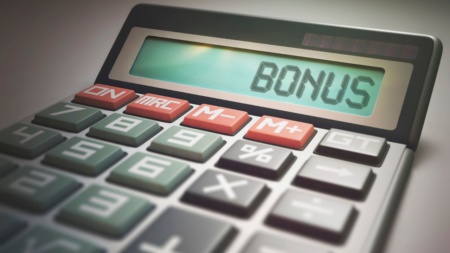Why Raising Your Prices Won’t Hurt Conversion Rates as Much as You Think
We like to think people buy things after carefully considering which option gives them the most bang for their buck.
We’re dead wrong.
People buy things for the same reason they do anything. Because they feel like it. We’re impulsive, we’re emotional, that’s what dictates our decisions. Money doesn’t have the impact on our decision-making that we think it does.
Let’s explore that concept and how it should impact your pricing strategy.
Why Higher Prices Are Better For Your Business
You make more money when you sell things at a higher price (duh). If you double your price and sales volume remains equal, you just doubled your business.
And if your product had costs associated with it, the situation is even better than that. Doubling your price will more than double your profits if you’re working with margins.

The natural reaction to that is, “Don’t be stupid if I doubled my price, I’d lose all of my customers.” We all feel as we increased our price our sales numbers might begin to look like this.

Would you actually lose 80% of your customers if you doubled your prices?
Doubling your profit and only losing 30% of your customers is a financial windfall. You should double your prices immediately if that’s the case.
Your sales numbers won’t plummet as prices go up. Price doesn’t impact the demand for your product all that much. Let’s look into why that is.
People Buy Solutions To Problems, Not Low Prices
Imagine this. You’re in your kitchen trying to open a can of something delicious, but you can’t. You don’t own a device that opens cans. So you run out to the store and buy the first can-opener you can find. Problem solved!
At what point in that process did you think about the price? If the local Walmart stocked two can-openers side by side, you might have considered it. But, if they only stocked one can-opener, would you have even looked at the price? Would you have even blinked if this can-opener was $4, $8, $16, or $32?
We’re too lazy to shop around for most items. We want solutions now. We only consider the price if there’s a cheaper version is sitting right next to the one we’re about to buy.
Products Don’t Have an Absolute Value
How much should water cost? How much is water worth? Can we give water an absolute value regardless of the situation?
The answer is, “Hell No!”
If you’re outside and it’s raining, water is free. If you’re at your house, the water’s free + shipping (the cost to get it out of the tap). If you’re at the convenience store, it’s a couple of bucks per bottle. If you’re at a concert, it’s $7 per bottle.
The price of water is determined by how thirsty you are and how many people are selling water nearby.

Imagine you were walking through the Sahara desert with a million dollars cash. You’re also dying of thirst and have just come across the only water salesman in the entire desert. How much money are you about to give to this man? (Hint: all of it)
Your Website Eliminates All Nearby Competition.
If you’re selling can-openers on Amazon.com, you’ll have competition. One inch from your listing, there will be cheaper can-openers for sale. People are going to notice your can-opener costs more than the one next to it.

That sucks for selling on Amazon, but it’s not an issue when marketing on your own website. If you have no competition on the same page, it’s a lot like the frantic shopper at Wal-Mart trying to solve his problem. He’ll buy the solution to his problem as long as the price isn’t otherworldly.

If I didn’t show you the Amazon prices 10 seconds ago, you wouldn’t have blinked at this item being $25 vs. $13? I wouldn’t have.
Avoid Selling Commodities to Control Prices.
You can get away with selling commodities on your website because there’s no competition. You can charge twice as much for a can-opener, and nobody will know the difference. This strategy works.
But, as much as we don’t know precisely what a can-opener should cost, we inherently know when the price sounds ridiculous. If you started charging $40+ for a can opener, most people would recognize that they’re getting fleeced.
Instead, try to sell things that other people don’t sell. For instance, I’m selling an iPad app that helps you write blog posts. How much should that cost? What do the competitors charge? Are there even competitors, or am I the only app in the world that does this?
You don’t know, and that’s the point. The less you know about how much my product should cost the better. I’m free to adjust the price however I see fit. There’s no external market pressure forcing me into the bargain bin.
People Care More About Numbers Than The Price Itself
Welcome to the fun world of price psychology. Where you’ll soon realize that your brain can be used against you to make you buy very expensive items.
The first lesson is anchoring.
The WordPress app I sell does have a competitor. They charge $50 per month for the exact same thing! My app has about 100 more features, and I only charge $5/m. My app is much better at a fraction of the price!

That’s what anchoring is. I made you feel like you should be paying $50 per month, then you felt relieved when it was only $5/m. But how much should this app actually cost? The cost for me to deliver it to you is free.
You’ve seen this exact same sales tactic performed countless times. Stores show an artificially high price to set your expectations, then they reveal a lower price to get you to buy. Stores do this because it works.
That’s not even close to where price psychology ends. Nick Kolenda put together an incredible guide on price psychology for dozens of examples exactly like the one above.
Let’s have a little more fun with price psychology. Tell me which number is bigger.

You probably noticed 20 is bigger than 19 right away there. Congratulations on saving a penny. Which number is bigger below?

I find this one fun. Because you immediately think the number with the larger font is the bigger number. Try this next one.

What! A comma is all it takes to make one number feel worse than the other? Price psychology is so much fun! OK, one more.

The actual dollar sign makes you feel like it’s a bigger number. I could do this all day, but let’s move on.
How To Price Your Products
When we first start selling something, we want to see sales right away. We have a tendency to set the price artificially low to get customers.
That’s a mistake. But, if it’s a mistake you’ve made don’t worry as you can and should be experimenting with price changes. You’re simply trying to fill out the chart below for your product.

Take what you would consider being a fair price on the premium side of the market. Start selling at that premium price. Write down the conversion rate on the chart above.
Experiment with having a sale. Write down the conversion rate on the chart above. Raise the prices a bit, write down the conversion rate on the chart above.
As this chart fills up, I’m willing to bet the price won’t affect the conversion rate anywhere near what you expected. And if it does (it won’t), then congratulations, you found the perfect price point!
Won’t My Customers Revolt if I Change Prices Like This?
The short answer is yes, you’re likely to hear about it if you’re a major brand that’s always changing prices.
That said, you’re probably not a major brand. Most fledgling Internet businesses are dealing with brand new people from Google every day. These people have no awareness of what your price was yesterday. Plus, most of your existing customers will never check back on the website to see if the price has changed.
Price changes are something to be wary of. This is another reason to get them out of the way right at the beginning and find that optimal price point. Once you find it, then you can sleep easy at night knowing you’ll rarely have to fidget with the price ever again.
Be Careful Lowering Prices
I encourage you to have a sale and experiment with lowering your prices. But, keep in mind that you have to dramatically increase volume to make up for lower prices.
For example, if you had a $10 product and a 10% conversion rate, you’d make $100 for every 100 visitors. With a $5 product, you’d need a 20% conversion rate to earn $100.
You’re not going to see conversion rate spikes that big because of price changes. People aren’t that price-sensitive.
Raising Your Prices Helps Establish You As The Premium Brand
Raising your prices has benefits beyond making more money. Human-beings are associative learners, and we associate high-prices with high-quality.
For example, is a Mac better than a PC?
I’m a software engineer who’s super into computers (I build apps and blog for a living). There are things I like about MacOS for sure. But, it’s a pretty well-known fact that they’re charging you 4x as much for 2-year-old hardware.
For example, if you go spec out a Mac Mini right now. They’ll charge you an EXTRA $800 + tax for a 2TB SSD drive. The exact same SSD costs $200 on Amazon. That’s insane!
And yet people don’t think of Macs as overpriced garbage. They think of them as the premium option that just works. It’s incredible what a little bit of marketing can do.
Higher Margins Mitigate Distribution Costs
Increasing prices and decreasing volume has more benefits than making more money per sale.
Take returns. Unless your brand has a robust resale market, any return you get is effectively garbage. It’d cost more to re-sell it used than it would to throw it away.
But, returns of physical goods happen no matter what. Higher volume means more returns, needing to create and distribute more inventory, paying more in taxes, and more. Be sure to factor these things in when setting prices!


